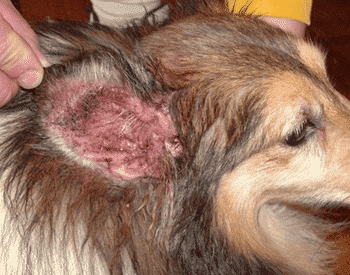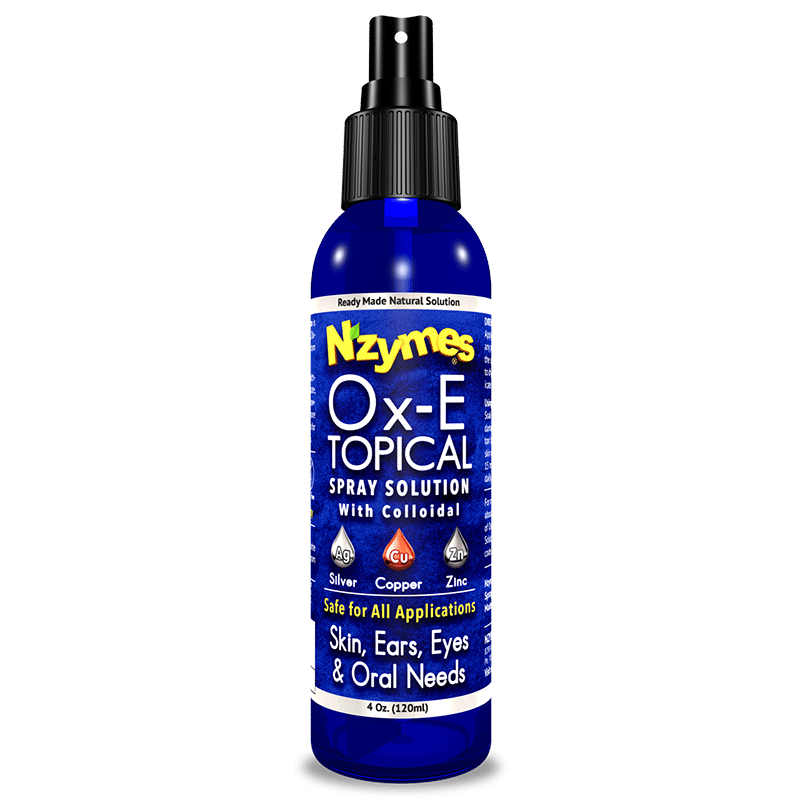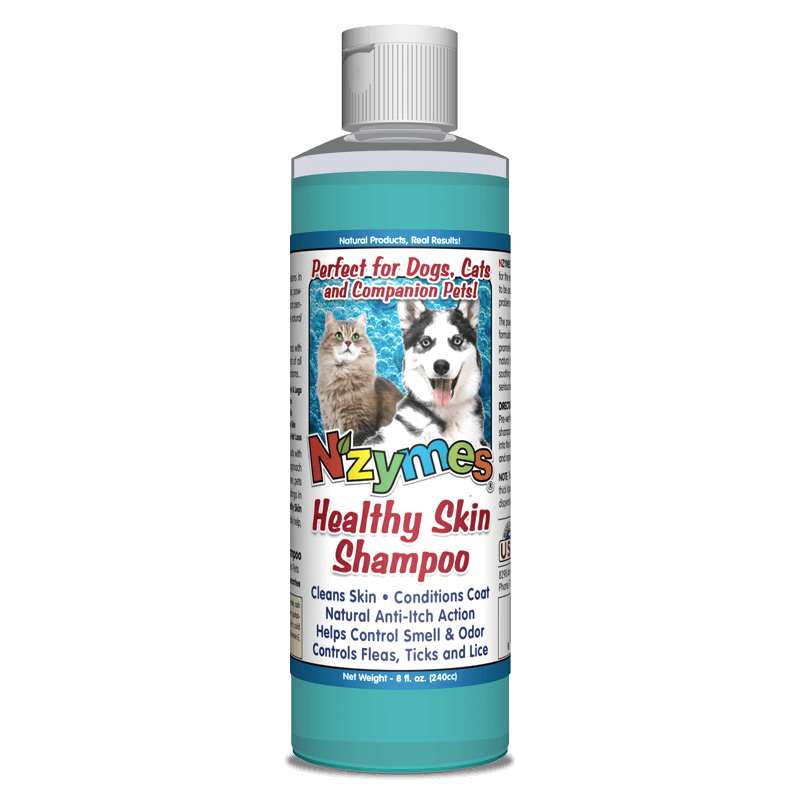Dog Ear Infections, Types/Treatments
Most dogs will suffer from an itchy, awful ear infection at least once in their lifetime. As good caretakers of our pets it’s our responsibility to be informed and to know what to look for in order to head off these painful and annoying infections. Since dog ear infections are not always immediately obvious it’s important to know the basics about them, what to do when they occur, and when to seek help. An ear infection can be an indicator of a much more serious systemic problem, such as a Systemic Yeast Infection, or a Pseudomonas Infection. The key is to know what to do, and how to resolve it as quickly as possible so that your pet’s suffering can end.
Symptoms of Dog Ear Infections
Dog ear infections are not always obvious. The early signs of ear infections in dogs are:
Early Symptoms List
- Brown or yellow emissions from the ear
- Odor from the ear
- Redness in the ear canal or ear flaps
- Repeated head shaking
- Rubbing the side of face against hard or scratchy surfaces
- Scratching or pawing at the ears
- Swelling of the ear canal or ear flap
As an ear infection worsens keep an eye out for the following as it may be time to see a veterinarian for an advanced condition. The advanced signs of ear infections in dogs are:
Advanced Symptoms List
- Balance problems
- Brown, yellow, or bloody discharge from the ear
- Hair loss around the ear
- Head shaking or head tilt
- Hearing loss, easily startled visually
- Scabs on the inside and/or outside of ear
- Scratching in and around the ear
- Severe redness and/or swelling
Is it time to see a Veterinarian?
While not all dog ear infections are debilitating, it is always a good idea to have your pet diagnosed by a professional physician. Veterinarians can help to pinpoint the exact type, cause, and treatment best suited to your dog’s ear problems. Typically, diagnosis is a painless, simple procedure that allows your veterinarian to collect ear discharges for lab work, inspect the affected areas, and ask the right questions to chase down any related symptoms and issues. It’s especially important to see a veterinarian in the case of any ear problems mentioned in the Advanced Symptoms List above.
Which Dogs Are Prone to Ear Infections?
Canine ear infections happen to almost every dog at some point. However, some dogs have more exposure to ear infections based on their breed and lifestyle.
- Short dog breeds often struggle with ear infections because their ears are closer to the ground. This makes it easier for simple things like splashing in water, playing in dirt, and other fun doggy activities to allow foreign material into those sensitive ears.
- An active lifestyle dog can also mean they’re more prone to ear infections. These dogs love to swim and play in the mud, and smell anything and everything. This boisterous spirit also gives them the most exposure to nature’s invaders.
- Outdoor dogs are also very likely to experience ear infections. Sleeping with their head close to the ground, these dogs are often exposed to all kinds of natural bacteria, fungus, and insects.
- Dog breeds with long floppy ears, drop ears, or button ears are much more likely to get ear infections. The nature of their special ears makes it much easier for dirt, moisture, bacteria, and other invaders to become trapped in the hard to reach parts of the ear folds and middle ear.
How Are Dog Ear Infections Treated?
Dog Ear Infections are typically treated by:
- A thorough cleaning of the dog’s ear to remove any dirt or build-up collected in the ear.
- An inspection of the ear canal and ear drum after cleaning to ensure the issue is resolved
- Perscription anti-biotics to fight bacterial infections.
- Topical treatments to help cleanse your dog’s outer ear and inner ear areas.
- Occasionally, in severe cases, pain killers are prescribed for your dog.
- Head protection cones to protect your dog’s ears from being rubbed, and pawed at.
Prevention of Ear Infections in Dogs
The first and best way to begin the road to healing is to be aware of the various environmental factors that are likely to be causing your dog’s ear infections. Clean bedding, indoor play areas, and a temperature controlled environment are all very helpful while your pup is on the road to recovery.
The next best thing you can do is clean your dog’s ears with our Ox-E Topical Spray Solution as often as possible.
Types of Dog Ear Infection
- Ear Mites: There are many types of mites that can live in your dog’s ear. These tiny parasites feed on the wax and oils in your dog’s ear canal. Mites are barely detectable by the naked eye and cause irritation and inflammation. Ear mite infections usually produce a dark discharge that looks roughly like coffee grounds.
- Yeast (Fungus): Yeast infections of the outer ear are easy to spot. The signs include your dog rubbing them, a strong Frito like odor from the ear, a waxy residue, and scabbing around the opening and flaps of the ear.
- Bacterial infection: These ear infections are often the hardest to spot visually as they typically involve your dog’s inner ear. Typical signs include balance problems, hearing loss, and odd head movements and often involve the inner ear and eardrum.
What can I do to help my dog’s ear infection?
- Pet hygiene: In most cases fixing up your pet’s hygiene is the best first step. If you are unfamiliar with how to clean your dog’s ears it is best to get the advice of a veterinarian about how to wash and clean your dog’s ears safely. Most dogs have vertical ear canals that can trap water and contaminants very easily if washed improperly. It’s important to be careful while cleaning and to have had proper instruction.
- Treat the visible areas: When cleaning surface areas we highly recommend our Ox-E Topical Spray Solution to help inhibit growth of fungus and bacteria. This gentle solution is safe for ears, eyes, and mouth and gives your pet the best chance at fighting off surface infections.
- Boost your pet’s immune system: It’s also a great idea to help give your pet’s immune system it’s best fighting chance by boosting it with our Antioxidant Treats. Our treats are formulated to help the immune systems of pet’s fight off invaders and stimulate the body’s natural healing systems.
What do veterinarians have to say about our solutions?
Video Commentary: By Dr. Kitty Kenyon, DVM, on Pseudomonas Infection



